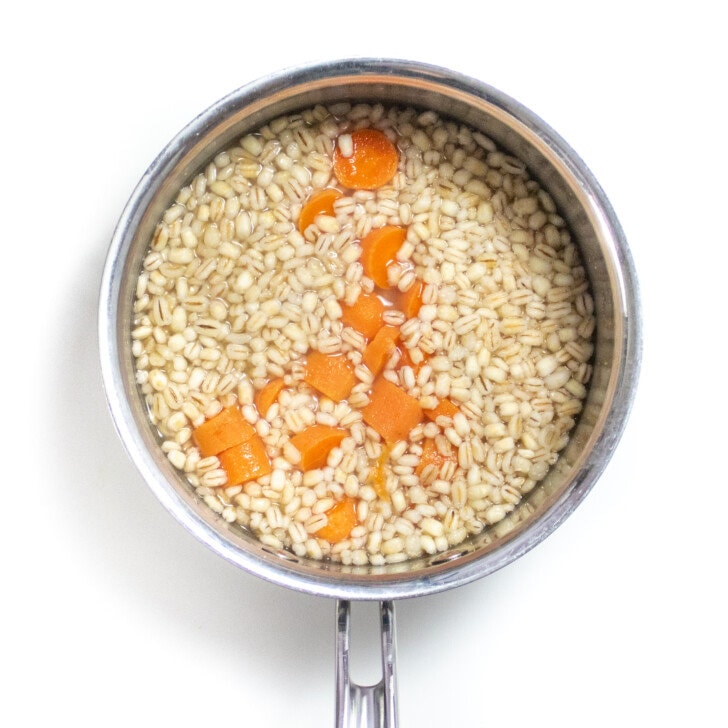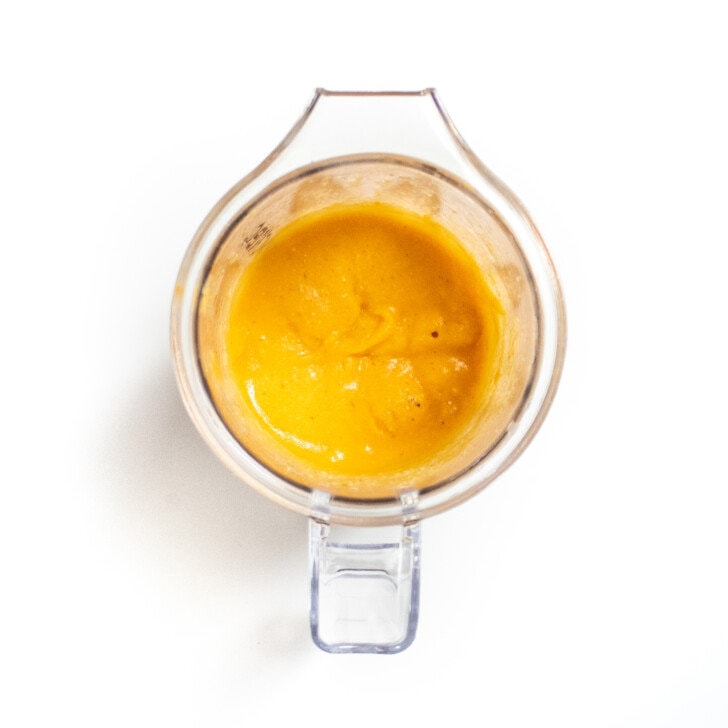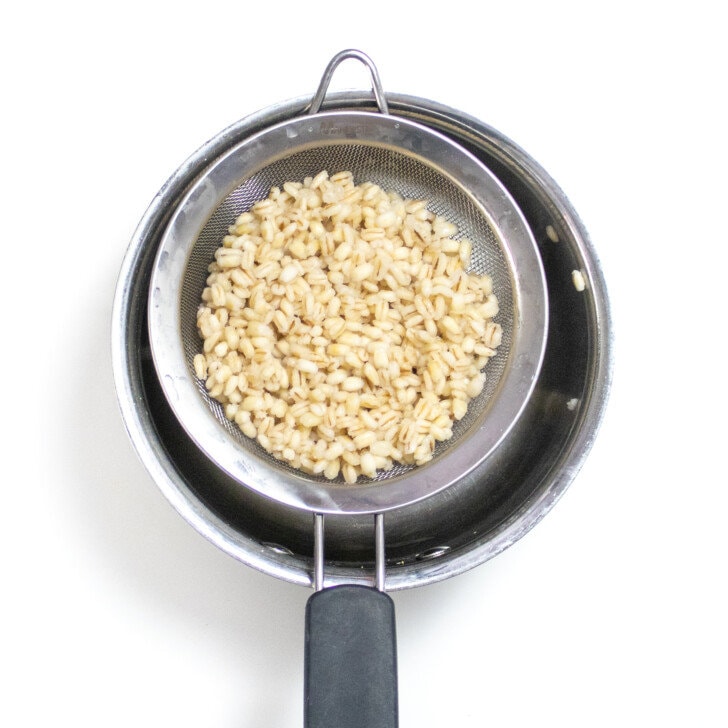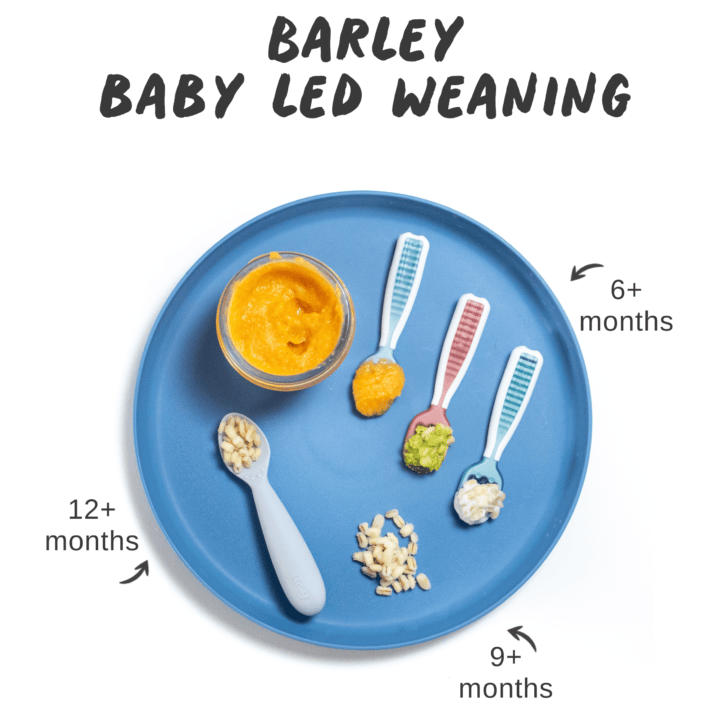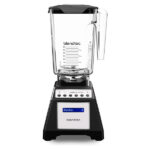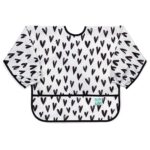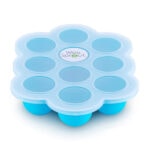How to Serve Barley to Baby
With our helpful guide, you can learn how to serve barley to your baby as a puree or for baby-led weaning. Barley is a healthy little grain rich in vitamins, minerals, and fiber. Plus, its slightly nutty flavor, chewy texture, and versatility can complement many dishes. It’s great for 6+ months.

Medically reviewed and co-written by Jamie Johnson, Registered Dietitian Nutritionist (RDN), and Lauren Braaten, Pediatric Occupational Therapist (OT).
Barley Baby Food
Want to give your baby all the healthy nutrients that barley has to offer, but not sure how?
I’ve got you!
This complete guide on how to feed barley to your baby is what you are looking for!
Below, you will find everything you need to know on how to cook and serve barley to your little one – the health benefits, how to serve it to your baby for baby-led weaning or as a puree, how to store these recipes, FAQs, and so much more!
First time making homemade baby food? Then, I would suggest that you start by reading our very in-depth guides – Guide on how to Make Homemade Baby Food if you are starting with purees, or this Complete Guide to Baby-Led Weaning if you decide to do baby-led weaning from the get-go. And be sure to check out my best-selling cookbook, Little Foodie: Baby Food Recipes for Babies and Toddlers with Taste for even more information and recipes!

Reasons to Love Barley for Baby
- Delicious baby food purees – 6+ months
- Great for baby-led weaning – 6+ months
- Also great for the finger food stage – 9+ months
- Full of essential nutrients for baby
- Different ways for baby to eat – spoon-fed or self-feed
- Easy to make – minimal prep work required
Benefits of Barley for Baby
Barley isn’t just for making beer, it’s for baby, too. This grain can be eaten in a variety of different ways and contains many nutrients that make this an excellent food to serve to baby, and adults alike.
- Barley is high in fiber which helps with digestion, constipation and establishing a healthy gut microbiome.
- It is an excellent source of iron, which is important for babies to consume once they start solids to prevent iron deficiency anemia.
- It is a good source of protein which is necessary for growth and development and keeping bellies full.
- Barley is a great source of an array of other important vitamins and minerals including copper, manganese, selenium, zinc, and B vitamins.

How to Pick Barley
Barley comes in two forms: whole, usually called hulled barley, and pearled. It is found in the rice and grains aisle of the grocery store.
- Hulled Barley: chewy in nature, minimally processed and contains more nutrients. Overnight soaking is recommended and takes at least one hour to cook.
- Pearl Barley: less chewy, produced from whole barley after removing the hull and bran. Needs minimal cooking and no soaking required.
Frequently Asked Questions
You can introduce your baby to barley as soon as they are ready to start solids, which is usually around 6 months of age.
Barley grains are very small, so they are unlikely to pose a choking hazard. However, they can be a risk for aspiration, if a small barley grain accidentally enters the trachea while eating. To minimize risks for aspiration, encourage baby to self-feed and always supervise baby while eating.
No, barley is not considered a common allergen; however, some individuals who are allergic to wheat or rye may also be sensitive to barley. Barley also contains gluten, which needs to be avoided in individuals with Celiac disease.
No, just the opposite in fact. Because barley is high in fiber, it can help keep the digestive system regular and help prevent constipation.
Tools Needed
These tools will make it a lot easier for you to serve barley to your baby. For more of my favorite kitchen tools, make sure to check out my shop.
- High chair
- Suction bowl or baby bowl
- Baby spoon
- Bib with catch pocket
- Sleeved bib
- Blender or food processor
- Steamer insert with lid
- Freezer tray
- Storage containers for fridge
- Stasher bag
- Reusable pouches
- Easy to hold fork and spoon
- GOOtensils
How to Prepare Barley
- Combine barley with water in a saucepan, and bring the mixture to a boil.
- Once boiling, reduce the heat to a simmer, and let it cook until it achieves a chewy but tender texture
- Pearl barley usually cooks in about 25-30 minutes, while hulled barley needs 40-50 minutes to cook.
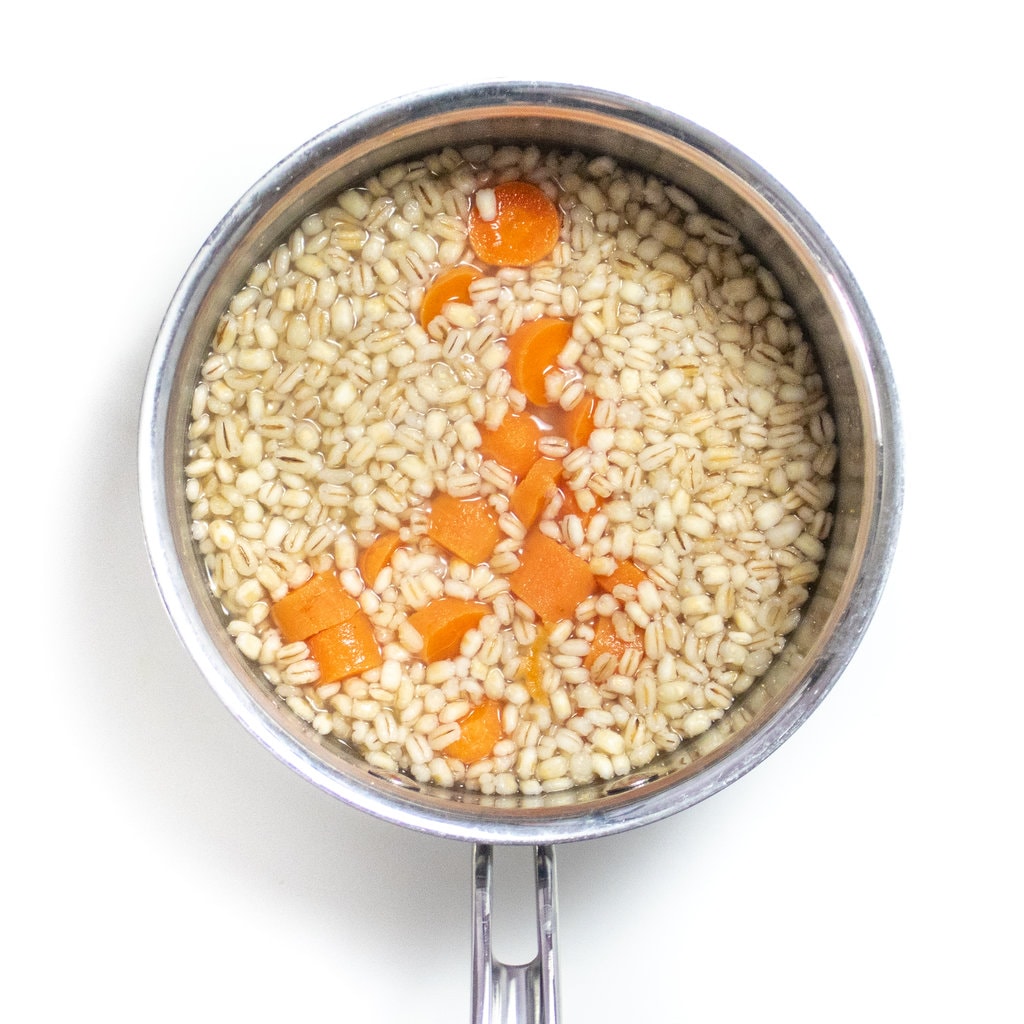
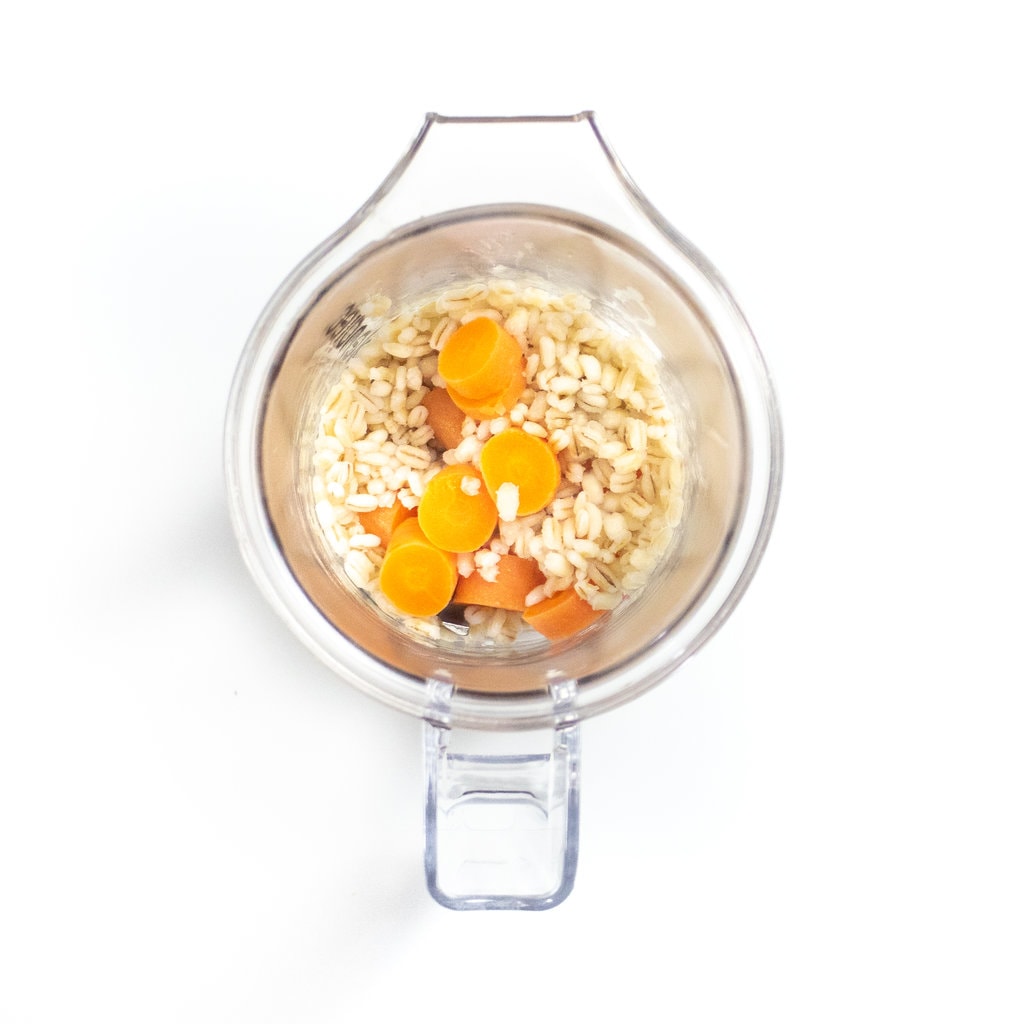


Barley Baby Puree
Barley baby food puree is simple to make. Simply cook and puree barley with cooked carrots, sweet potatoes, peas or broccoli.
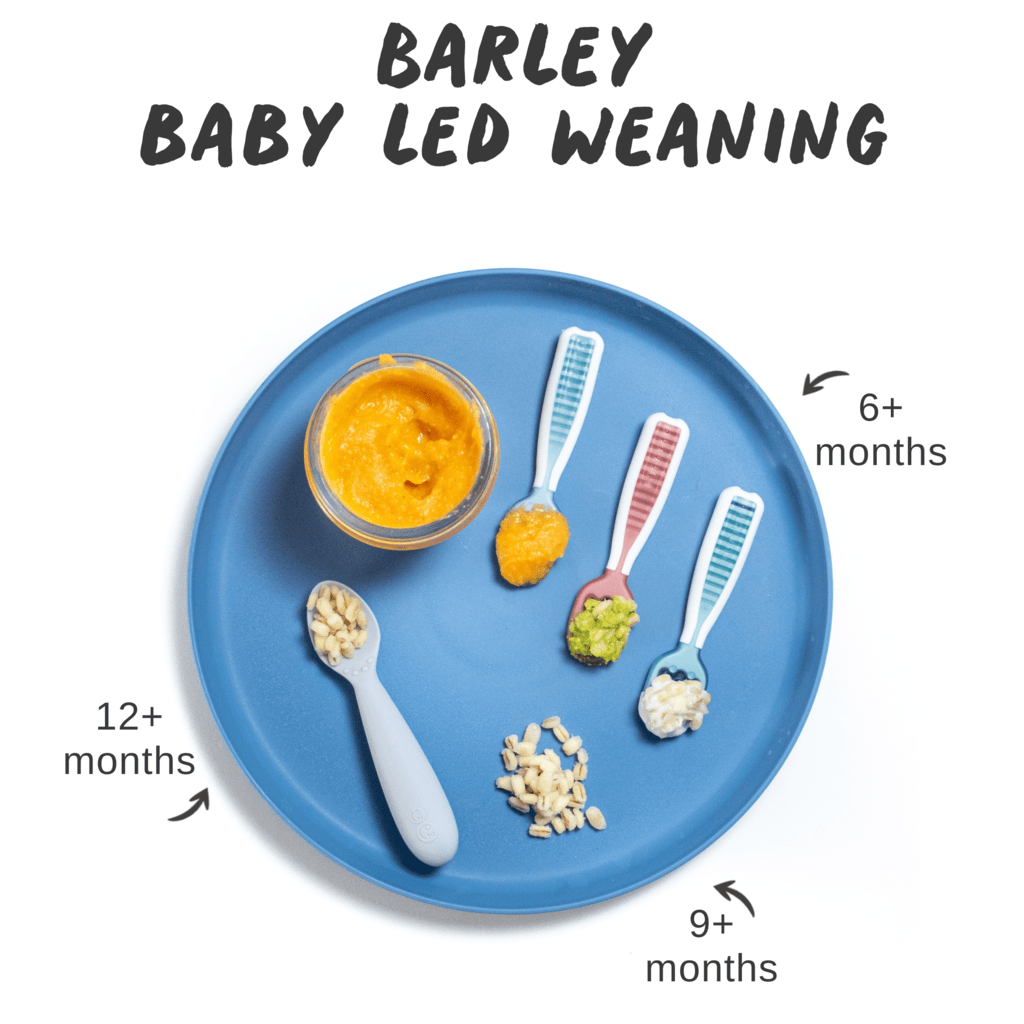
Barley for Baby-Led Weaning
Barley is a great first food for your baby due to all of its health benefits. Barley can be served on its own with some seasonings or mixed into other dishes to give them a boost of protein and fiber.
- 6-12 months: Serve barley as a porridge that makes it easier for scooping for little hands or on a pre-loaded spoon. You can mix barley with pureed or mashed avocado, yogurt or any other pureed fruits and vegetables for more variety. Use barley flakes or barley flour to make pancakes, baked goods, or as a binder for meatballs. You can also roll slippery foods, like banana or mango spears in barley flakes to make it easier for baby to grip these foods.
- 9+ months: At this age you can serve your baby whole barley to work on their pincer grasp.
- 12+ months: You can continue serving barley porridge, in baked goods, meatballs or veggie patties at this age. Barley is also great for adding to casseroles and for giving soups and stews a thicker texture. You can also try serving to your toddler whole, for toddlers who are practicing their spoon skills.
Storage Instructions
Refrigerator
You can store it in an airtight container in the fridge for up to 4 days.
Freezer
Pureed or cooked barley can be frozen for up to 4 months.
- Spoon puree into a freezer storage container – do not overfill.
- Place the lid on the storage container or cover it with a piece of saran wrap and label it with the date and recipe name.
- Place the tray into the freezer and let freeze completely – preferably overnight.
- Pop out the baby food cubes and place them in a zip-lock baggie or stasher bag – don’t forget to re-label the baggie or stasher bag for future reference.
Combination Purees
While Barley Baby Puree is great by itself, it’s also super easy to mix and match with other nutrient-dense baby food purees. Give these fun flavor combos a try!
Expert Feeding Tips
- Store barley in an air-tight container, away from light and moisture. Always wash barley thoroughly before cooking.
- Soaking hulled barley reduces cooking time and will also improve the body’s ability to digest its nutrients. To soak, rinse barley until the water runs clear. Cover with fresh water in a bowl and soak for up to 8 hours.
- Adding spices or seasonings to barley cereal or porridge is a great way to increase its flavor profile. Some spices that pair well with barley include cinnamon, cardamon, thyme or garlic.
- Barley is a good source of iron, so pair it with a good vitamin C source to maximize absorption.
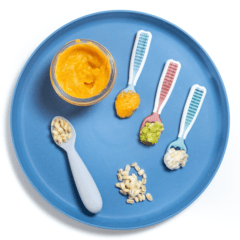
Get the recipe: How to Serve Barley to Baby (puree & baby-led weaning)
Ingredients
Barley Baby Puree
- 1/3 cup pearl barley, rinsed
- 1 cup carrots, peeled and roughly chopped
- 1 1/2 cups water
Barley for Baby-Led Weaning
- 1/2 cup pearl barley, rinsed
- 1 1/2 cups water
Instructions
Barley Baby Puree
- Place the barley and carrots in a small saucepan with the water. Place the saucepan on the stove and bring to a boil. Reduce heat to low, cover, and cook for 20-25 minutes or until the barley is chewy.
- Drain any excess water.
- Transfer the cooked barley and carrots to a blender.
- Puree for 1-2 minutes on a medium-high speed. If the puree is too thick, add in 1/4 of a cup of water at a time until you reach your desired consistency.
- Serve a portion and then store the rest of the puree in the fridge or freezer for a later meal.
Barley for Baby-Led Weaning
- Place the barley and water in a small saucepan. Place the saucepan on the stove and bring to a boil. Reduce heat to low, cover, and cook for 20-25 minutes or until the barley is chewy.
- Drain any excess water.
- Serve the barley to your baby in an age-appropriate way – either mashed by themselves or with another cooked fruit or vegetable, avocado or yogurt and served on a self-feeding spoon, or added into another food such as a burger or meatballs.
Notes
Did you make this recipe?
Tag @babyfoode on Instagram and hashtag it #babyfoode!

